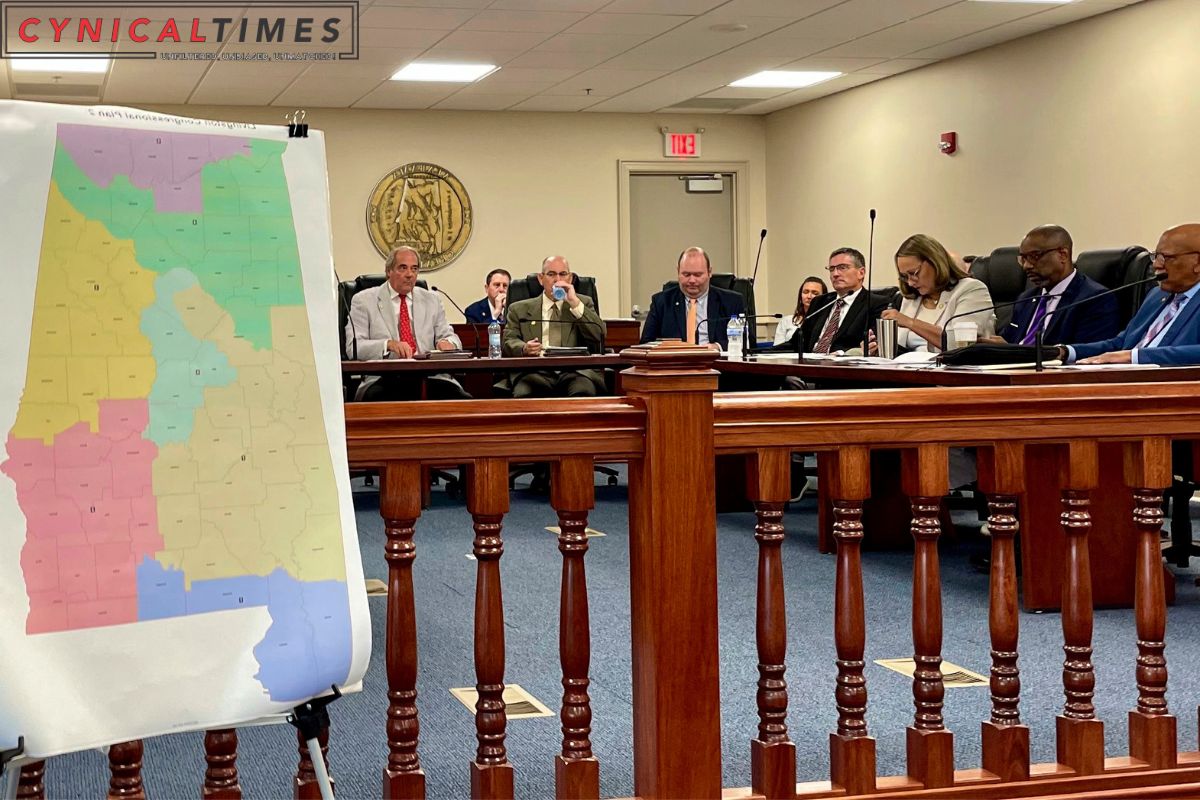Federal Court Strikes Down Alabama Congressional Maps : Alabama court deems state’s congressional map illegal for lacking a predominantly African American second district. This decision by three judges may spark a Supreme Court battle and alter Congress’s post-2024 election power.
The Court said Alabama’s new congressional district plan likely violates the Voting Rights Act of 1965. Despite comprising 27% of the state’s population, only one seat is predominantly occupied by Black individuals. The Voting Rights Act is crucial for protecting voting rights. It prevents unfair voting practices, particularly in the South during Reconstruction.
When the state stopped using maps, the Court feared non-compliance with federal law. The state’s map didn’t solve the problem of fair representation for Black people. The Court has chosen a “special master” to divide the state into representative districts. They wonder if lawmakers will create a compliant new map. Black voters should have the right to choose their preferred candidate in a new district.


Also Read :Joe Biden Targeting of NFL Fans: Football Season Is Here
The decision mainly concerns Alabama but will impact other states, particularly in the South. This could greatly benefit the Democrats in the 2024 race. This decision may impact other court cases on redrawing vote districts in Texas, Florida, Georgia, and other states. The mix of race, politics, and redistricting has long been a major issue in these areas.
Alabama’s Attorney General, Steve Marshall, plans to challenge the ruling. Amanda Priest, speaking for Marshall, believes the Legislature’s map complies with the Voting Rights Act and Supreme Court ruling. They want to ask the Supreme Court to ensure the state can use its congressional districts in the upcoming election and the future.
This year, the Supreme Court has looked at Alabama’s legislative boundaries. In a 5-4 vote in June, the Supreme Court made a surprise choice. They disagreed with Alabama’s claim that the Voting Rights Act allowed a “race-blind” method for making legislative districts. The Court’s decision was surprising given their prior decisions weakening the Voting Rights Act.
After the ruling, the Supreme Court sent the matter back to the Alabama Legislature. Then, the Legislature made a new plan, but still no second district for black people. In July, Gov. Ivey signed this new map into law. This required the case filers to restate their argument in the Federal Court. They said the state didn’t follow the Supreme Court’s order.
Alabama’s defense argued that the Supreme Court ruling didn’t mandate district division based on the Black population. They prioritized African-American communities while maintaining district cohesion. The Alabama court fight highlights issues with voting districts, race, and political representation in the US. As this case progresses, the outcome will have significant and lasting effects on elections.
Our Reader’s Queries
Why did federal court throw out Alabama’s new congressional maps?
The recent congressional map passed by Alabama’s Republican-controlled legislature was reviewed by three judges. However, they had to throw out an earlier redistricting plan approved by state lawmakers as it was found to have violated Section 2 of the Voting Rights Act. This was due to the plan diluting the power of Alabama’s Black voters.
Did Alabama judges strike down state’s latest congressional map?
Alabama Republicans have been dealt a blow by a panel of federal judges who have struck down their new congressional map. The map, which includes only one majority-Black district, goes against a Supreme Court order. The ruling comes after the Republicans created the map, and it is a clear indication that they will need to go back to the drawing board. The judges’ decision is a victory for those who believe in fair representation and equal opportunities for all.
Did the Supreme Court deny Alabama’s bid to use GOP drawn congressional map in redistricting case?
Alabama officials’ request to use a congressional map drawn by GOP state lawmakers in July for upcoming elections has been declined by the Supreme Court. The lower court’s decision to block the district lines remains in force as it is believed that they violated federal law.
Did the Supreme Court reject Alabama voting map with only one black majority district?
Alabama’s bid to use a voting map with just one majority-Black district in the upcoming 2024 elections has been denied by the Supreme Court. The lower court had previously ruled that the map was in violation of the Voting Rights Act, and the Supreme Court has upheld this decision. This means that Alabama will have to revise its voting map to ensure fair representation for all voters.

